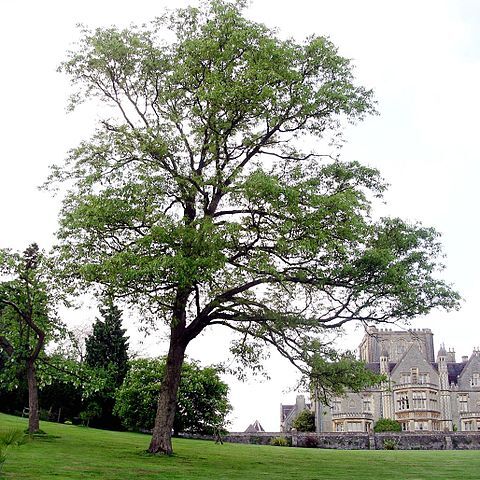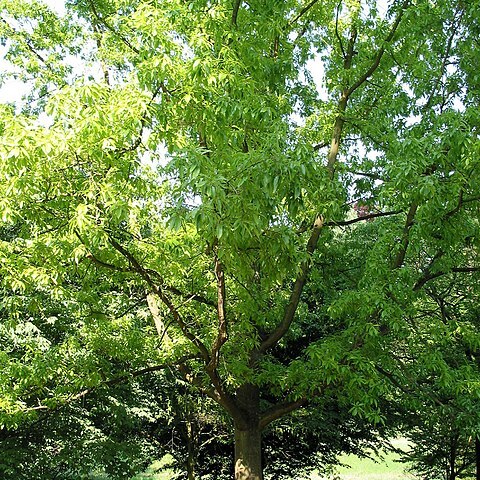A large deciduous tree. It grows 15-25 m tall. The trunk can be 50-60 cm across or larger. The leaf stalk is 1-3 cm long. The leaf blade is oval or sword shaped and 8-15 cm long by 2-6 cm wide. The base is rounded and there are teeth along the edge. It tapers to the tip. There are 13-18 secondary veins on each side of the main vein. The cup encloses about 2/3 of the nut. The fruit is a nut 1.6-1.9 cm long by 1.3-1.5 cm wide.



